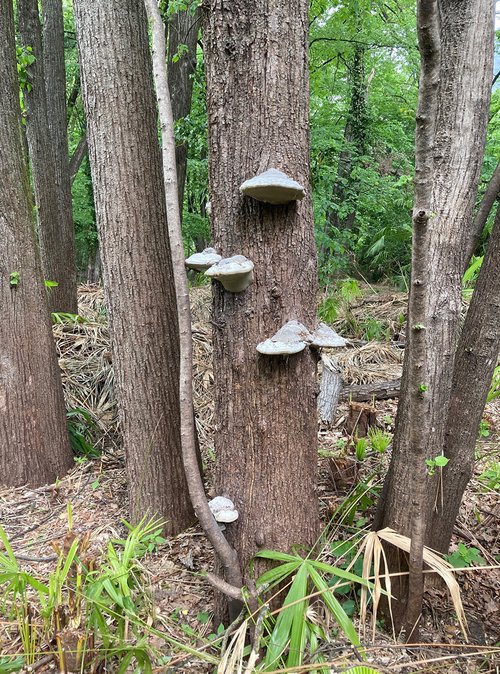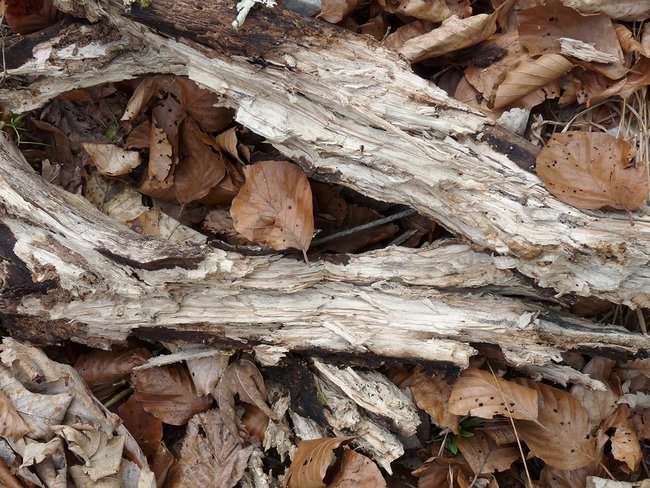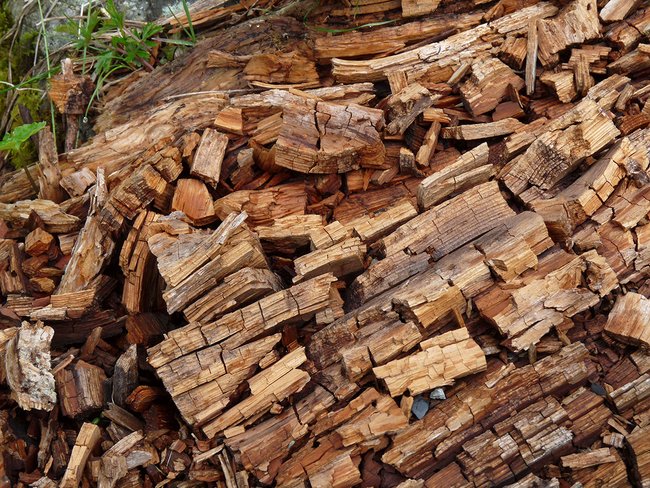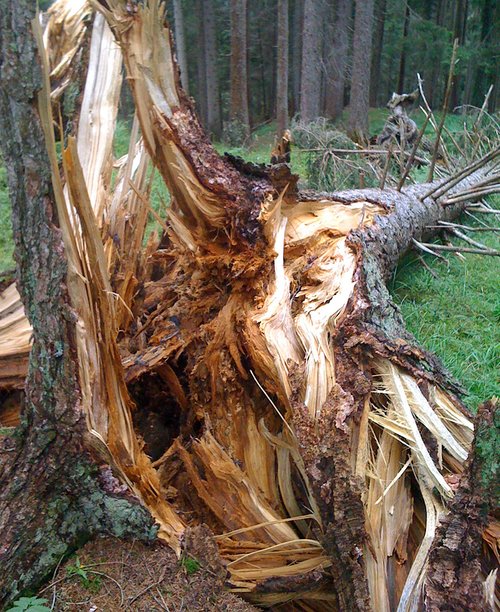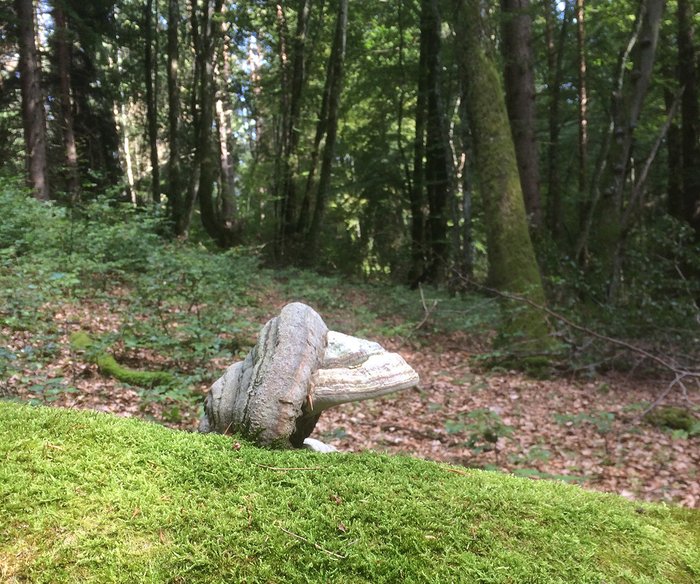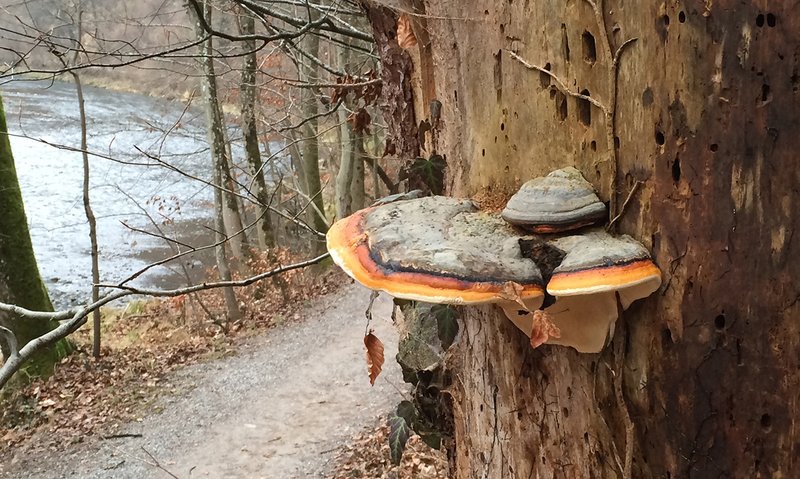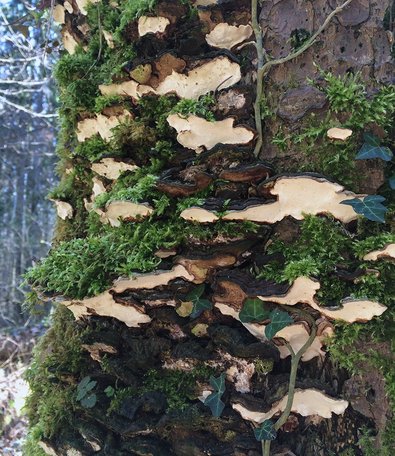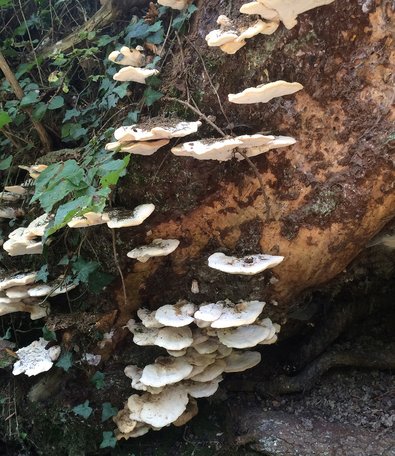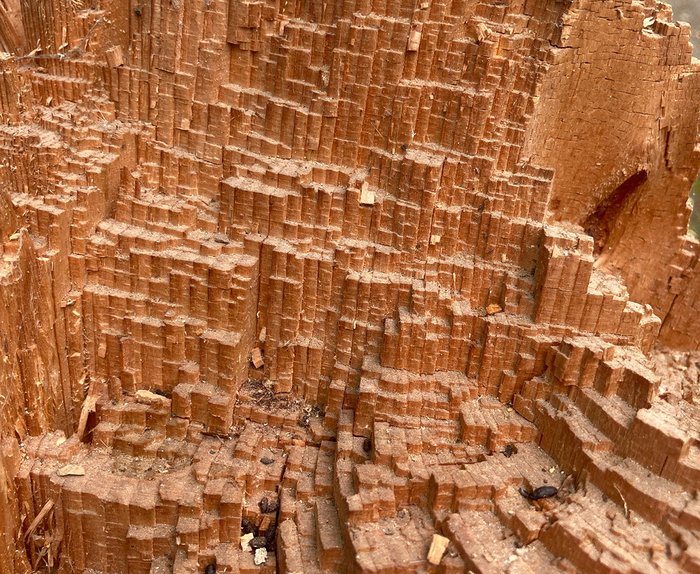We have all seen the fungi that grow horizontally out of the trunks of dead or sometimes even still living trees (Fig. 1). These are the fruiting bodies of wood-dwelling fungi, known as polypores or bracket fungi. Their filiform fungal hyphae penetrate tree trunks and feed on wood biomass.
Wood essentially consists of cellulose, hemicellulose and lignin. These structural substances are integrated into the cell walls as the trees grow thicker each year and give the wood the stability it needs. About half of wood biomass consists of carbon, which comes from the CO2 in the air and is absorbed by trees during photosynthesis. A tree takes in around 1.6 to 1.8 kg of CO2 per kilogram of timber, making forests one of the world's key carbon sinks.
White rot and brown rot fungi
Wood-degrading fungi can roughly be divided into white rot and brown rot fungi. White rot fungi use special enzymes to break down both cellulose (including hemicellulose) and lignin. During this process, the brown lignin is removed and the decomposed wood turns a whitish colour, often having a fibrous texture. In contrast, brown rot mainly breaks down cellulose; the decomposed wood takes on a brownish hue and shows cuboidal cracking (Fig. 2).
Fig. 2 - White rot (top) with a fibrous texture and brown rot (bottom) showing typical cuboidal cracking. Photos: Thomas Reich (WSL)
Both types of rot have various special forms and it is not always possible to definitively distinguish between the two. When wood decays, the carbon stored in the timber is used by the fungi to build up fungal tissue. However, most of the carbon is 'burnt' to produce energy and is consequently released into the air as CO2. As such, wood rot fungi play an important role in the carbon cycle in the forest ecosystem.
Heart rot on living trees
Wood rot often occurs on trees that are still living. The fungi primarily attack the dead, inactive heartwood, while the sapwood, which carries nutrients and water, is largely spared. As no vital processes are affected, infected trees often show no externally visible symptoms of infestation and appear healthy.
Heart rot can infect trees for years and 'devour' them from the inside out, causing the heartwood to decompose completely, often with the help of ants nesting in the rotten wood. This leaves a hollow tree that can live on for decades thanks to its intact sapwood. However, heart rot often impairs the stability of the trees and can cause the trunk or stump to break in strong winds (Fig. 3).
Rot fungi can penetrate a tree in two ways: either via spores that germinate in wounds (e.g. scars on the trunk or roots, broken branches) or, in the case of rot fungi that also attack the roots, healthy trees can also be infected via contact with the roots.
Formation of fruiting bodies
Most polypores are Polyporales within the division Basidiomycota. They typically do not start forming their fruiting bodies until wood decomposition is already advanced. The spores, which are only a few micrometres in size, mature in the pores inside the fruiting body. Once mature, they fall from the pores and are spread by the wind. Polypores are known for their geotropism, i.e. the fact that their fruiting bodies grow in the direction of gravitational pull, so the pores are always perpendicular to the ground. As a result, fruiting bodies that have formed on an upright tree will continue to grow at a different angle after the tree has fallen (Fig. 4).
Common polypores
The red-banded polypore (Fomitopsis pinicola) is frequently seen on dead conifers (Fig. 5). It causes brown rot with a distinctive cuboidal structure. The fruiting bodies are perennial and can reach sizes of up to 30 cm. The tinder polypore (Fomes fomentarius) occurs on weakened or dead deciduous trees. It is a white rot fungus and forms large perennial fruiting bodies (Fig. 1). Its name comes from its former use as tinder for lighting fires. This leathery fungus was also used as a raw material for clothes, hats and bags. As a 'surgeon's agaric' (Fungus chirurgorum), it was also used in the past to treat wounds.
A polypore that can have economic implications is Heterobasidion parviporum, part of the H. annosum species complex. It is a white rot fungus and a known pathogen of red rot in spruce. This heart rot occurs on living trees and can climb several metres within a tree, resulting in a considerable loss of value. The fruiting bodies of the root rot are usually unobtrusive, located on the roots or at the base of the trunk of infested trees (Fig. 6). The spores tend to infect fresh stumps created through timber harvesting. The fungus then colonises the rootstock and is transmitted to neighbouring trees through the roots. To prevent such infestations, the cut surface of stumps can be treated with urea or with the antagonistic fungus Phlebiopsis gigantea.
Climacocystis borealis also causes heart rot in spruce. It has a white, annual fruiting body that appears in autumn on tree stumps or on dead trees (Fig. 7). This white rot fungus is unusual in that it breaks wood down into cube-like pieces (Fig. 8). Trees infected with heart rot but that are still alive are often affected by windsnap.

